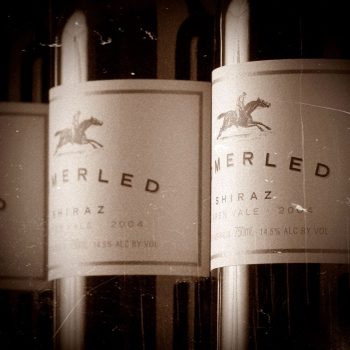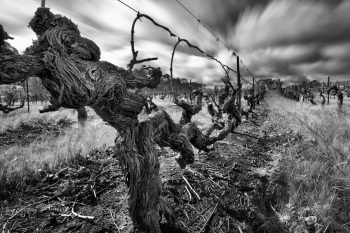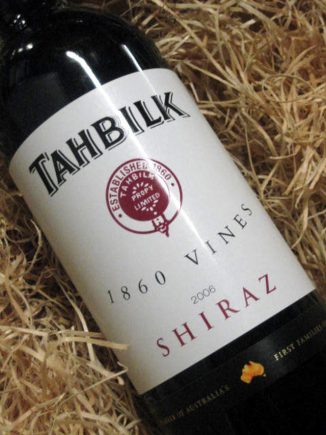
Whoever decided to celebrate International Shiraz Day (which happens to be today!) in the middle of winter, is a genius!
What a great time of year to sit down with a glass of your favourite Shiraz, in front of a warm cosy fire and… read something?!
Like this blog all about Shiraz, perhaps?
So, go on… pour yourself a glass of Somerled Shiraz and join me as we learn more about this well-established and much loved variety.
SHIRAZ: THE STORY OF AN AUSTRALIAN LEGEND
 Almost universally planted, Shiraz has it all!
Almost universally planted, Shiraz has it all!
Capable of everything from affordable, quaffable BBQ reds to magnificent, age-worthy classics that are truly world-class.
Shiraz thrives in Australia’s warm climate and various soil types. Wine drinkers love the taste of this juicy-ripe red packed with fruit flavours and texture.
Shiraz was one of the original varieties planted in Australia. It instantly flourished in its warm, dry climate.
Australia boasts some of the oldest pre-phylloxera Shiraz vines in the world. Ironically, French wine researchers and winemakers now travel to Australia to source vine material to take back to France.
FUN FACTS!
- Shiraz is grown by 4 out of 5 wineries in 60 of our 65 wine regions!
- Shiraz represents nearly half of planted red grapes in Australia
- Shiraz makes up nearly 1⁄4 of our total wine production
IS IT SYRAH OR SHIRAZ?
Australia adopted the name Shiraz in the mid-19th century. This variety is called Syrah almost everywhere else in the world. But due to its enormous commercial success on the international market, producers from Australia have chosen to label their own wine “Shiraz”.
Exactly how Syrah became Shiraz remains somewhat of a mystery. Some say it’s because the original cuttings were incorrectly labelled. Others say it’s simply the strong Australian accent…!
Some Australian winemakers have recently endeavoured to produce medium-bodied wines more European in style. They often choose to label them Syrah to differentiate them from richer, fuller-bodied Shiraz styles.
THE HISTORY OF SHIRAZ IN AUSTRALIA
1820s–1830s
While the exact origins of Australia’s first Shiraz vines are subject to debate, we know they arrived as cuttings in the early 1800s.
The first wines to come from Shiraz cuttings were often labelled Hermitage after the renowned French wine AOC (Appellation d’Origine Contrôlée), seen by some as the spiritual home of Shiraz.
1840s–1890s
 Shiraz vines were planted in regions like the Hunter Valley, Barossa, McLaren Vale, and Nagambie Lakes and Great Western
Shiraz vines were planted in regions like the Hunter Valley, Barossa, McLaren Vale, and Nagambie Lakes and Great Western
in Victoria. Some of the vines are still producing fruit today and represent the world’s oldest continuously producing
Shiraz vines.
Christian Auricht migrated to Australia from Prussia in 1830s. He established one of the Barossa’s first trading villages – named Langmeil. This historic site is now home to Langmeil Winery and their ‘Freedom’ vineyard. They claim it was planted as part of his mixed farm in 1843.
1860
 Tahbilk was established in Victoria’s Nagambie Lakes region. Shiraz was planted and survives to this day with the Tahbilk’s ‘1860s Vines’ Shiraz crafted from these grapes.
Tahbilk was established in Victoria’s Nagambie Lakes region. Shiraz was planted and survives to this day with the Tahbilk’s ‘1860s Vines’ Shiraz crafted from these grapes.
1867
Henry Best planted Shiraz and other varieties in his Great Western vineyard in Victoria. These vines continue to thrive today.
Early 1900s
Single-variety labelled Shiraz wines began to make their way into the glasses of Australians. International drinkers also began to embraced this style through an emerging export market.
Loving our blog? Sign up for weekly updates straight to your inbox…
1950s–1970s
Shiraz made its move to become the most popular wine in the country.
When official measures of grape crush were recorded in the 1950s, Grenache held the highest red grape crush number with 21,200 tonnes, while Shiraz took second place with 12,400 tonnes. By 1976 Shiraz recorded a crush figure of 72,200 tonnes!
1980s–1990s
The Shiraz export boom took hold with the popularity of Australian Shiraz soaring in international markets, including the US.
In the United States, consumers were guided by one of the world’s most influential wine voices, Robert Parker Jr. of Wine Advocate. Parker praised the intensely bold flavours and characters of Australian Shiraz, awarding 100-point scores to wines such as Penfolds Grange.
High Parker scores were regularly given to Australian wines made from riper fruit, deep in colour, high in alcohol and matured in toasted new oak. These wines were extremely popular, often commanding premium prices. But consumer preferences eventually began to shift towards lighter-bodied, restrained examples.
2000s
Everyday-drinking Shiraz were led by the ‘critter wine’ movement, heralded by Casella Wines’ Yellow Tail label, which
became a huge export success. As a result, plantings of Shiraz rose substantially.
In response the market shifted slightly, encouraging Australian winemakers to craft more moderately flavoured and textured Shiraz styles.
Today
Cool-climate Shiraz began to build a reputation as one of Australia’s finest wines.
Today, Shiraz leads the charge as the country’s most widely planted variety. It positions Australia as a world-class producer of both cool-climate expressions as well as fine examples of big-flavoured richer, riper styles from warmer regions.
Shiraz: Just what the doctor ordered!
Many of Australia’s early wine promoters were doctors. Among them was Dr Christopher Rawson Penfold, who arrived in Adelaide in 1844 and established Magill Estate.
Penfolds’ first wines were available on prescription as they were thought to be of benefit to anaemic patients!
So, that’s my problem… not enough Shiraz!
If you need me, you’ll know where I’ll be…
